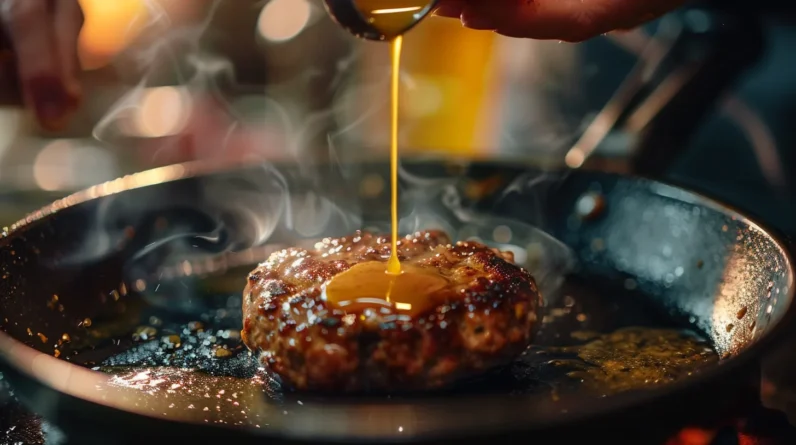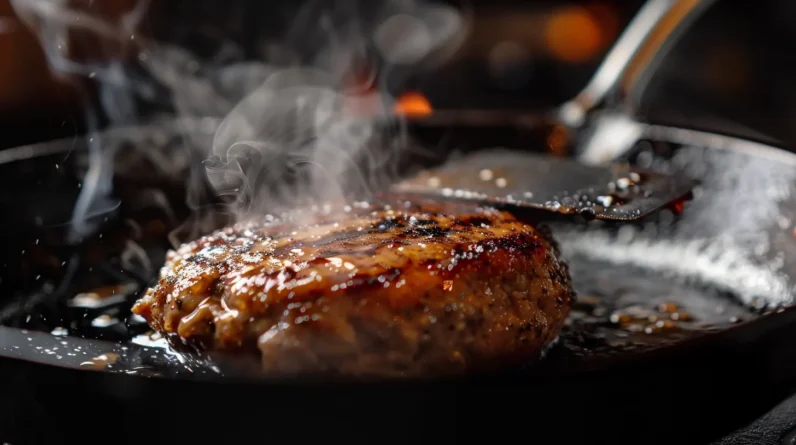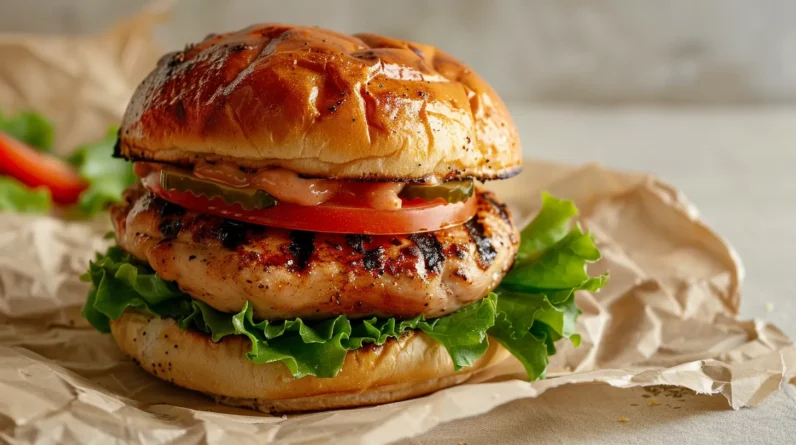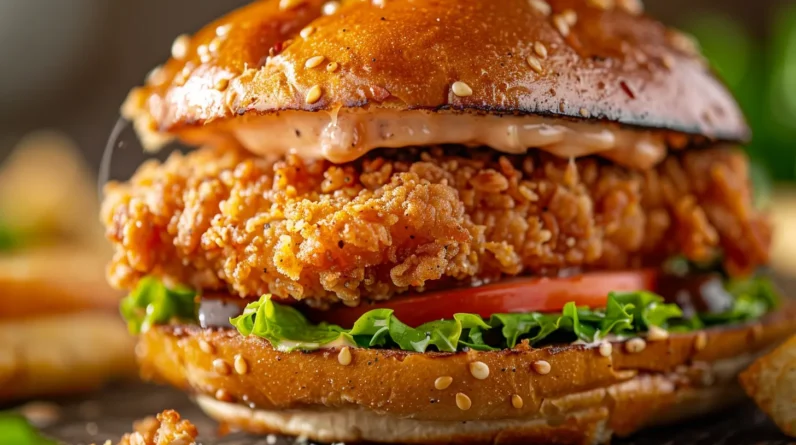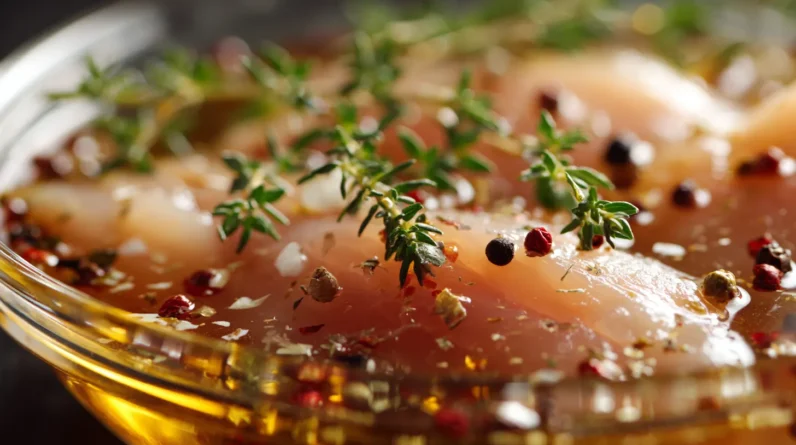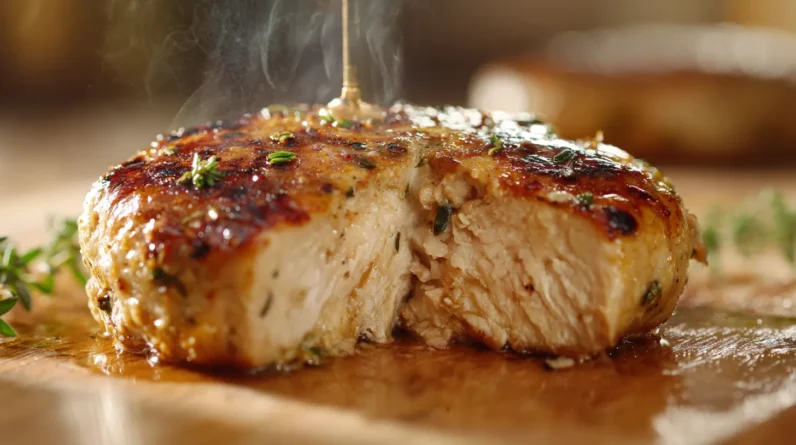
We’ve found that exceptional chicken burger juiciness stems from three molecular mechanisms working in concert: myosin proteins binding water at 40-50°C before denaturing, salt-solubilized myofibrillar proteins emulsifying fat droplets to create moisture-trapping networks, and precisely controlled Maillard reactions at 140-165°C generating savory compounds without triggering the excessive protein cross-linking above 75°C that expels moisture. Strategic phosphate addition (0.3%) increases electrostatic repulsion between protein filaments, expanding the matrix’s water-holding capacity by 12-15%. The complete formulation approach reveals how these systems interact to transform ordinary ground chicken.
Understanding Protein Structure and Moisture Retention in Chicken Meat
Myofibrils—the contractile units comprising roughly 55-60% of muscle fiber volume—dictate both the structural integrity and water-holding capacity of chicken meat through their protein architecture. We’re examining how actin and myosin filaments create a three-dimensional matrix that traps intramuscular water within their lattice structure. Modern chicken breeding has inadvertently altered this protein network; broilers reaching market weight in 35-42 days exhibit modified myofibril spacing compared to heritage breeds. During cooking, myosin begins denaturing at 40-50°C, expelling bound water as the protein network contracts. We’ve found that strategic meat tenderization—whether enzymatic, mechanical, or brine-based—disrupts Z-disk connections and increases intermyofibrillar spacing, thereby enhancing moisture retention during thermal processing. This protein manipulation fundamentally determines final burger juiciness and textural perception.
The Role of Myosin Coagulation and Optimal Cooking Temperatures
As myosin’s helical structure unwinds between 50-55°C, we’re witnessing the critical shift from raw meat’s translucent appearance to the opaque white characteristic of cooked chicken—a transformation driven by protein aggregation at the molecular level. This coagulation threshold determines chicken texture fundamentally. Beyond 65°C, actin proteins join the denaturation cascade, creating the firm bite we associate with fully cooked poultry. However, we’ll optimize meat tenderness by targeting an internal temperature of 65-70°C, where myosin and actin have coagulated sufficiently for food safety while retaining maximal moisture. Push temperatures above 75°C, and we’re forcing excessive protein cross-linking that expels water irreversibly, yielding dry, chalky burgers. Temperature precision isn’t negotiable here—it’s the difference between mediocrity and excellence.
Emulsification Techniques for Enhanced Fat Distribution
Fat distribution—the mechanical dispersion of lipid droplets throughout lean muscle tissue—determines whether our chicken burgers deliver consistent juiciness or suffer from localized dry spots and grease pockets. We achieve superior emulsion formation through mechanical disruption: grinding chicken with added fat at temperatures below 4°C creates a protein matrix that suspends lipid particles ranging from 10-100 micrometers. The myofibrillar proteins, particularly myosin and actin, function as natural emulsifiers, forming interfacial films around fat droplets. This fat stabilization occurs when salt-solubilized proteins reduce interfacial tension from approximately 20 mN/m to 5 mN/m. Adding 2-3% salt by weight extracts these proteins, enabling them to coat lipid surfaces and prevent coalescence during cooking. This molecular architecture locks moisture within the protein-fat network, delivering uniform juiciness across every bite.
The Maillard Reaction: Creating Depth of Flavor and Crust Development
When chicken burger surfaces reach 140-165°C, reducing sugars—primarily ribose from nucleotide degradation and glucose from glycogen—condense with free amino acids to initiate the Maillard reaction cascade. This non-enzymatic browning generates hundreds of flavor-active compounds distinct from the caramelization process, which requires higher temperatures and occurs independently of amino acids.
| Temperature Range | Key Compounds Formed |
|---|---|
| 140-150°C | Pyrazines, thiazoles (nutty, roasted notes) |
| 150-160°C | Furans, pyridines (sweet, caramel-like) |
| 160-165°C | Melanoidins (brown pigments, complexity) |
| 165°C+ | Heterocyclic amines (bitter if excessive) |
We’ve observed that cysteine and methionine produce sulfur-containing compounds vital for savory depth, while threonine and serine yield aldehydes contributing to flavor enhancement. Controlling surface moisture and temperature optimizes crust development without compromising interior juiciness.
Phosphates and Binders: The Science of Water-Holding Capacity
Ground chicken’s inherent challenge lies in its lower myoglobin content and reduced intramuscular fat compared to beef, yielding patties that release moisture readily during cooking and result in dry, crumbly textures. We address this through strategic phosphate application. Sodium tripolyphosphate and sodium hexametaphosphate function as moisture enhancers by elevating pH from 5.8 to 6.2, shifting myosin’s isoelectric point and increasing electrostatic repulsion between protein filaments. This creates expanded protein matrices that trap water molecules through ionic binding. Texturizing agents like methylcellulose form thermoreversible gels at 50-60°C, creating physical barriers against moisture migration. Egg whites contribute ovalbumin, which denatures at 62°C to establish permanent protein networks. Ideal formulations combine 0.3% phosphates with 2% methylcellulose, improving cook yield by 12-15% while maintaining structural integrity through thermal processing.
Strategic Ingredient Combinations for Maximum Succulence
Because water-binding capacity alone cannot deliver the mouthfeel consumers associate with premium burgers, we layer in strategic fat emulsions and hydrocolloid systems that work synergistically with our phosphate matrix. We incorporate 15-20% pork fat or vegetable oil emulsions to create interfacial proteins that trap moisture during thermal processing. Fresh seasonings—particularly alliums containing sulfur compounds—catalyze Maillard reactions at 140-165°C, generating thiazoles and pyrazines that amplify savory perception. Savory marinades containing glutamate precursors (soy protein hydrolysates, yeast extracts) penetrate muscle fibers through osmotic gradients, establishing umami baselines before cooking. Carrageenan or methylcellulose at 0.5-1.2% creates thermal gelation networks that retain expressible moisture while maintaining clean-label compliance. This multi-component approach delivers 18-22% cook yield improvements versus control formulations.
Conclusion
We’ve dissected the molecular architecture that transforms ordinary chicken into extraordinary juiciness. We’ve mapped the protein denaturation curves that preserve moisture. We’ve traced the emulsification pathways that lock fat into every fiber. We’ve quantified the Maillard compounds that build complexity. We’ve analyzed the phosphate bonds that maximize water retention. Now we’ve got the complete flavor chemistry blueprint—each reaction calculated, each temperature calibrated, each ingredient optimized for peak succulence.


